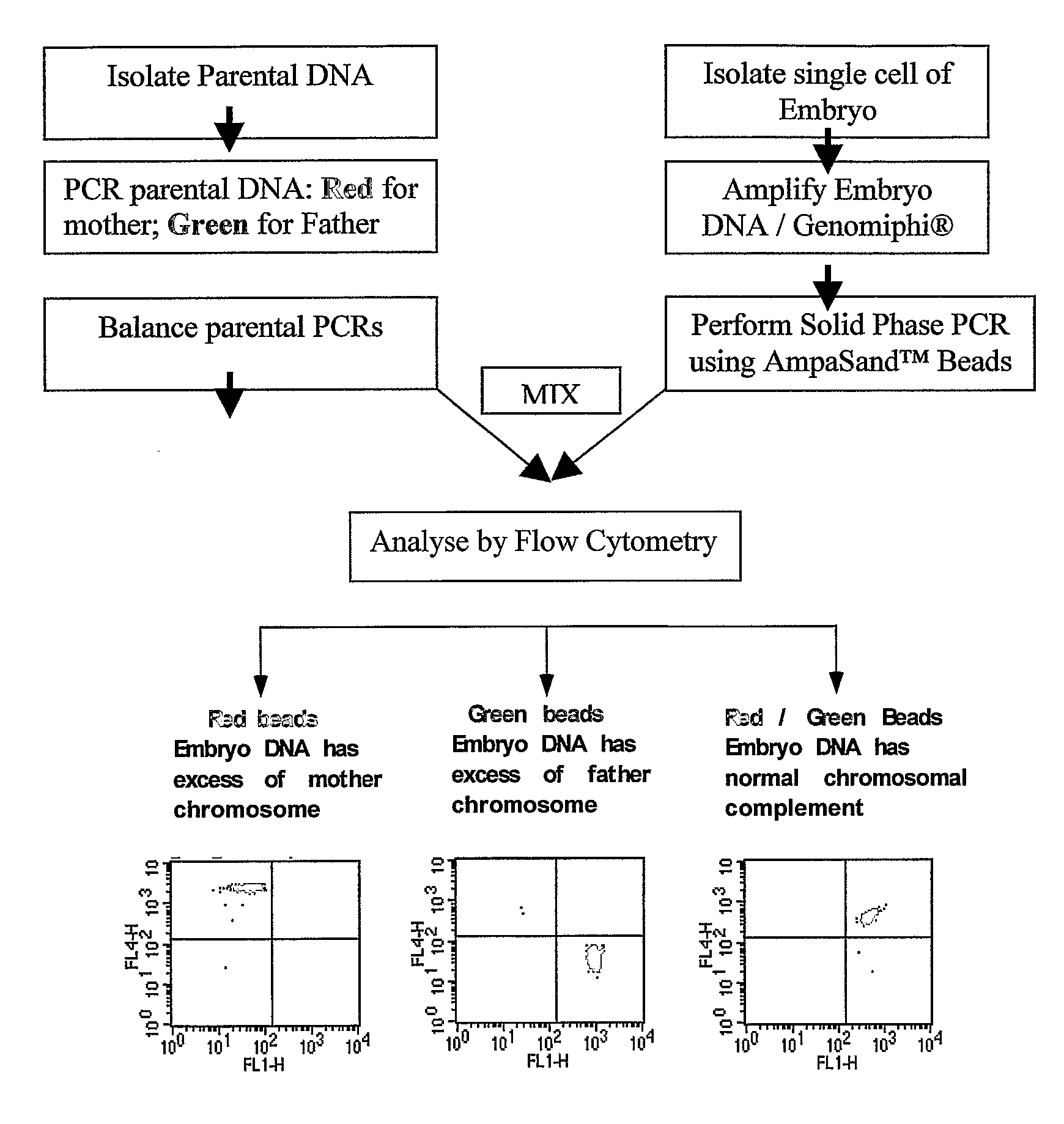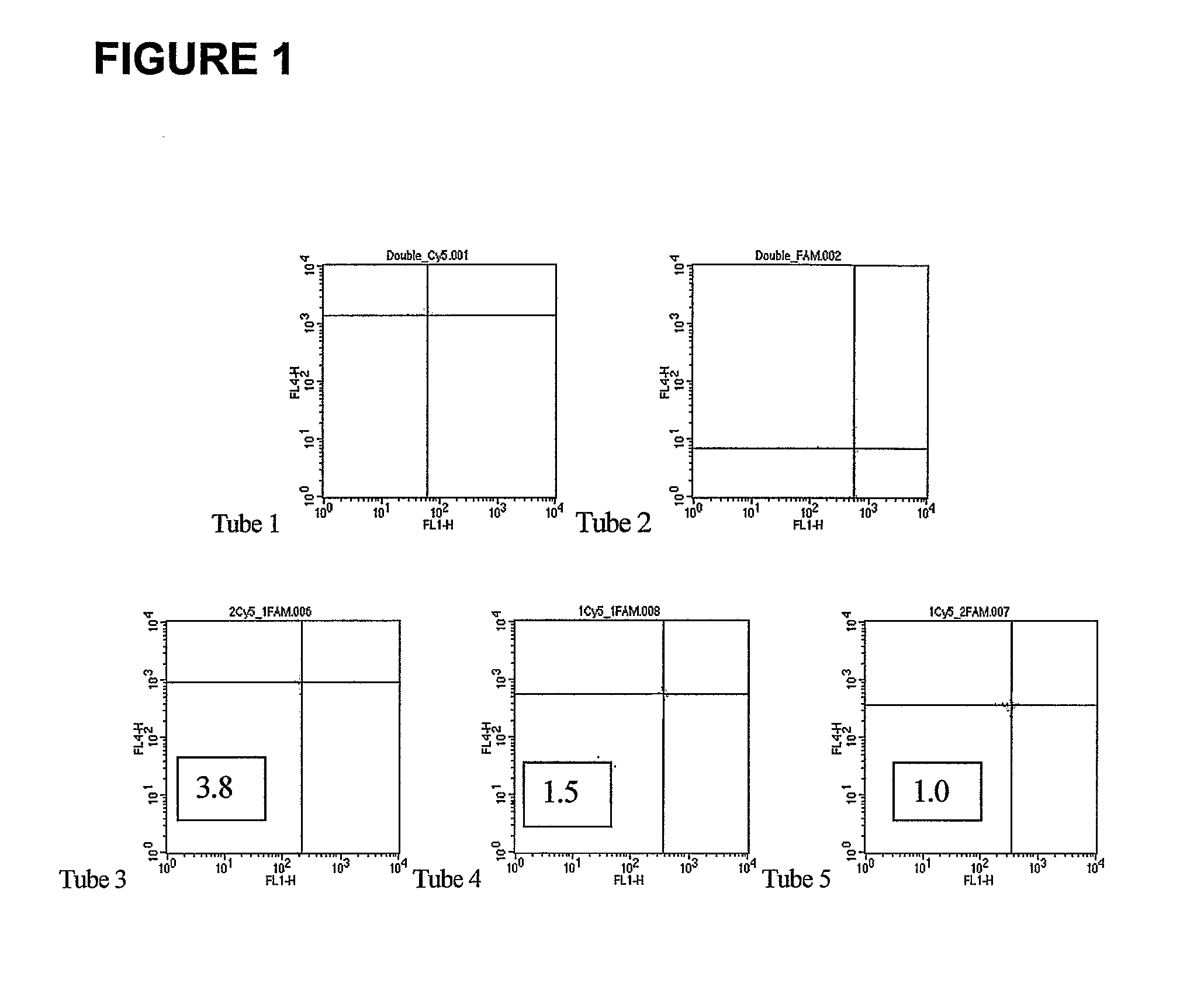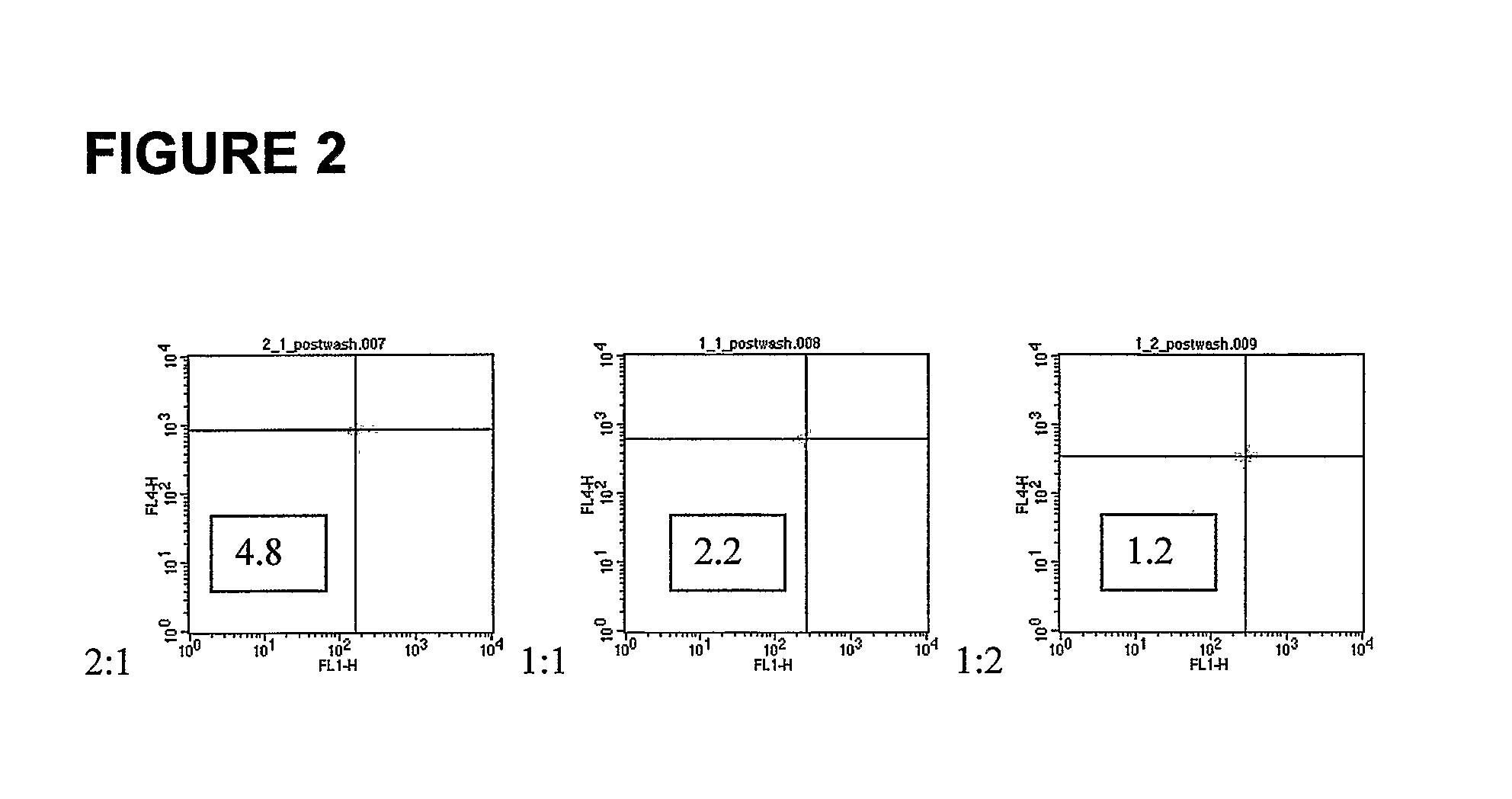Method Of Detecting Aneuploidy
a detection method and aneuploidy technology, applied in the field of aneuploidy detection, can solve the problems of cytogenetic studies of human oocytes fixed, the most common lethal monosomy, and the abnormality of individuals
- Summary
- Abstract
- Description
- Claims
- Application Information
AI Technical Summary
Benefits of technology
Problems solved by technology
Method used
Image
Examples
example 1
Sensitivity of Fluorescent Detection
[0122]The development of a high speed, low-cost, aneuploid scan is contingent first on the sensitivity of the system to discriminate input fluorescent ratios of 2:1, 1:1, and 1:2 in respect of DNA sequences labelled with Cy5 or fluorescein.
[0123]To test this capacity, PCR products from 24 human samples were pooled. 200 ng of DNA from the pool was incubated with saturating amounts of Cy5 probe or saturating amounts of fluorescein probe. The DNA was incubated at 99° C. for 2 minutes followed by 10 minutes at RT. Probed PCR products were then mixed, in the ratios below (Table 2), with approximately 1,000 AmpaSand™ Beads with immobilized targets specific for the PCR product:
TABLE 2Ratio testing for DNA contentCy5 labeledTubePCR product (ng)Fluorescein labeled PCR product (ng)120020203105410105510
[0124]Samples were brought to 200 μl and then the beads were analysed on a BD FACSCalibur with two lasers. The dot plots are shown in FIG. 1.
[0125]The results...
example 2
Fluorescence Based Method to Detect Aneuploidy in an Embryo
[0128]This approach has several advantages over methods currently used for the detection of aneuploidy in embryos. First, while the technique requires the same reagents for generation of fluorescently labeled PCR products, the analysis is completely automated from DNA generation to final analysis. Second, the running costs are minimal because the reader for the output is a standard flow cytometer, which is currently available in most laboratories, especially Pathology laboratories, worldwide. Third, the method works equally well in non-dysjunctions during 1st or 2nd meiosis in either parent. Fourth, the platform is microsphere-based and compatible with currently available flow cytometers as well as possible easy direct transferral to microsphere based platforms currently in development.
[0129]The present invention comprises the use of the parents as normal controls and the DNA from the embryo as the unknown sample in a compet...
PUM
| Property | Measurement | Unit |
|---|---|---|
| Fluorescence | aaaaa | aaaaa |
Abstract
Description
Claims
Application Information
 Login to View More
Login to View More - R&D
- Intellectual Property
- Life Sciences
- Materials
- Tech Scout
- Unparalleled Data Quality
- Higher Quality Content
- 60% Fewer Hallucinations
Browse by: Latest US Patents, China's latest patents, Technical Efficacy Thesaurus, Application Domain, Technology Topic, Popular Technical Reports.
© 2025 PatSnap. All rights reserved.Legal|Privacy policy|Modern Slavery Act Transparency Statement|Sitemap|About US| Contact US: help@patsnap.com



